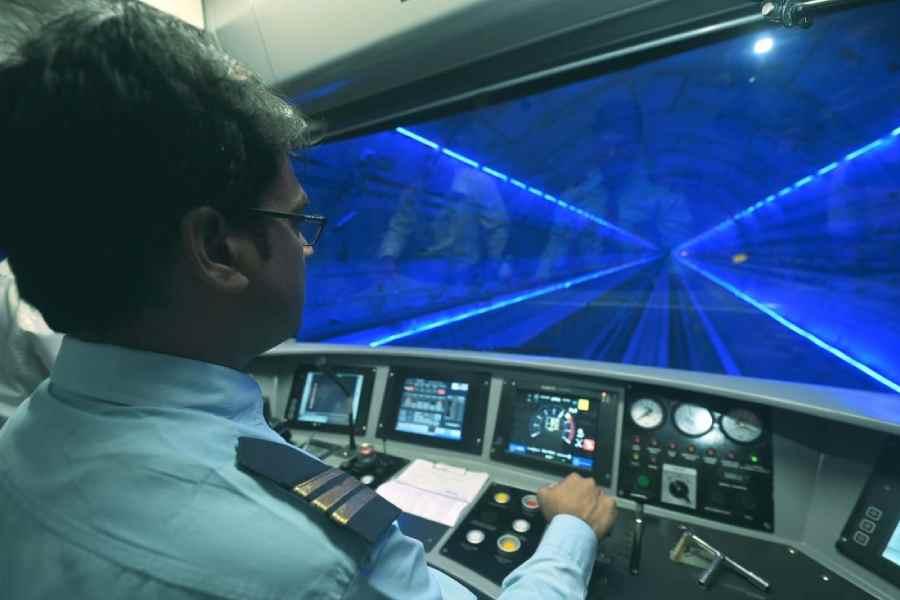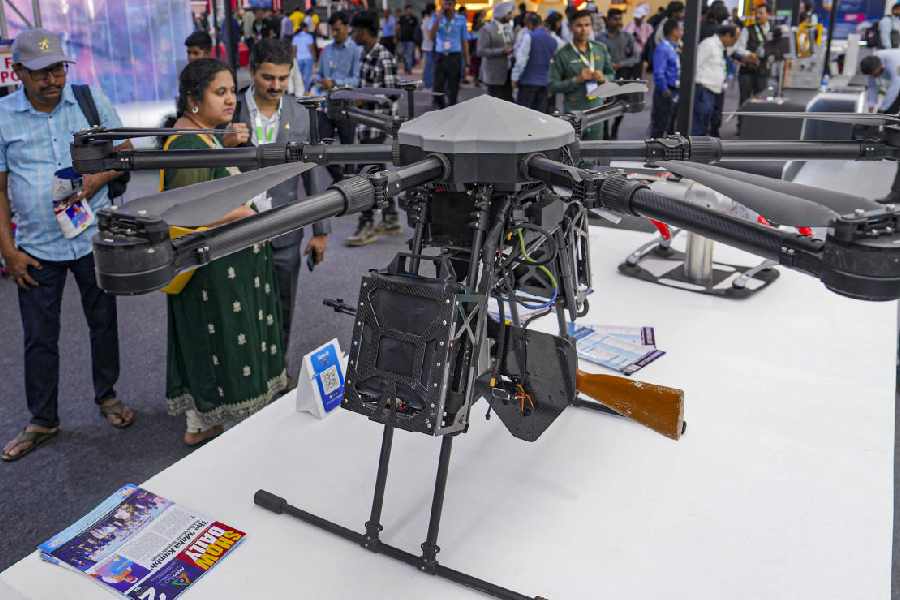Howrah station to Dalhousie in two minutes.
India’s first underwater Metro promises to change the nightmare commute from Howrah to Calcutta.
What it also promises is hope for Howrah residents.
After Prime Minister Narendra Modi ceremonially launched the Howrah Maidan-Esplanade Metro section of the East-West Line, a Howrah resident told this newspaper that he hoped “Calcuttans would no more be as condescending as they were towards people in its twin city”.
“People in Calcutta think Howrah is another planet. That is mainly because of the long time spent on commute (between Howrah and Calcutta). I hope the Metro line changes that condescending mentality,” said a public relations professional who lives in Howrah Maidan, goes to his office in Ballygunge and travels across Calcutta to meet clients.
The journey from Howrah Maidan to Dalhousie, a distance of less than 5km, takes more than 45 minutes during the office rush now. The return journey is no less taxing.
On Wednesday, it took nine minutes from Howrah Maidan to Esplanade.
The stations that came on the Metro map on Wednesday were Howrah Maidan, Howrah (adjacent to the railway station), Mahakaran and Esplanade.
On Day I, the train moved slower than it would ultimately do, said a motorman.
But it also did not make the scheduled stops. So the real journey is likely to be this fast or thereabouts.
“Passenger operations are likely to begin within 10 days,” said Kolkata Metro Rail Corporation managing director V.K. Srivastava.
From Howrah station to Mahakaran station was a two-minute ride. Mahakaran is for commuters headed to Dalhousie, the original office para of Calcutta.
The journey includes 520 metres across the Hooghly.
Blue LED lights inside the dark tunnel announce that the train is about to enter the riverbed, India’s first Metro to do that.
“Oi dyakh, oi dyakh (see, see),” a railway employee from another division exclaimed to fellow travellers during a ceremonial ride on Wednesday, as the train went under.
Another traveller clicked pictures of a board that read “Hooghly river starts”, seconds after the train crossed Howrah station.
Around 45 seconds later, a board announced that the river had ended and in another minute it was at Mahakaran station.
“It feels overwhelming,” said an employee of a Japanese multinational that Metro had outsourced the signalling system to. He was taking the ride with a group of colleagues.
“I have worked on railway projects in other cities. But I am from Calcutta and being part of this historic project means a lot to me,” he said.
At least initially, the blue lights seemed to have worked. It gives a sense of a special ride. But for the lights, it would be another journey through a tunnel, like in the north-south corridor.
Once the East-West train stopped at Esplanade station, the train doors opened and shut in sync with the platform screen doors.
A Metro official said this was possible because of the communications-based control system that was behind the East-West train operations.
“Once the driver pushes the start button, an automated management system takes over and runs the train. From air-conditioning to opening and closing of doors, everything will be controlled by the communication-based control system,” said a Metro official.
Each coach has eight doors, four on either side.
In the absence of platform screen doors, the city’s most populous north-south corridor is routinely crippled by suicide attempts.
East-West Metro rakes — made by the Bangalore-based PSU, BHEL — have six coaches, two less than the ones on the north-south route.
There was a steady buzz at the old complex of Howrah station since Wednesday morning as the decked-out Howrah Metro station awaited the much-anticipated formal opening.
At 10.28am, Prime Minister Narendra Modi pressed a remote control to launch the Howrah Maidan-Esplanade section along with the two other truncated sections — between New Garia and Ruby and between Taratala and Majerhat.
The moment of the train chugging into the Hooghly marked a milestone in the project whose foundation stone was laid 15 years ago.
Around 3pm, a young man was clicking pictures of the Howrah Metro station, standing on Platform No. 8 of the old complex of Howrah station. He lives in Tarakeswar and works in the sales team of a financial services company with a catchment area of Park Street, Esplanade and Dalhousie.
The new stations are much larger than what most Calcuttans are familiar with and sparkling.
Escalators match staircases in number and washrooms can be spotted easily. Ample signage leaves little room for confusion for a first-time passenger. All of these — or the lack of them — have been peeve points in the country’s oldest Metro line, now between New Garia and Dakshineswar.
But for someone like Sounak Mondal from Tarakeswar, the new link promises something more basic. Dignity.
It takes him around an hour on a train to reach Howrah, from where he boards a bus to Esplanade in another 30 minutes. “One leg of the journey has my shirt drenched in sweat. I usually carry a spare shirt to work every day,” he said. “I hope I won’t have to take that trouble anymore.”
When commercial services start, he will be able to take a Metro from Howrah to Esplanade in nine to 10 minutes.










